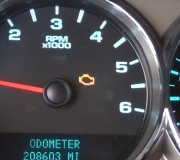Hello, swapping the coil and plug to another cylinder really is the first test I would do as well. You can try to do a cranking cadence test to see if you notice (by ear) if there might be a compression issue in that cylinder. You can first try holding the gas pedal to the floor and see if the vehicle has clear flood mode where it should turn off all the fuel injectors and you can listen to it just cranking (or unplug all the fuel injectors) to see if it has a smooth cranking sound or if it is an uneven type of sound that a low compression issue will make. Because with a cylinder that has low compression the crankshaft will speed up on that specific cylinder, and then slow down on the next one that has good compression. It will be an up/down type of sound. I'll see if I can find a video for you of it.
Another test you can do is a fuel injector balance test, where you will install a fuel pressure gauge on the rail and pulse each injector will a pulse tool for a certain number of milliseconds and watch how much pressure each injector drops. Ill post the tool for that as well, you can get one for around $30 on amazon, which will rule out the fuel injector without having to take out the spark plug.
I will usually get the engine hot before removing the spark plugs, the cylinder heads will expand just enough to help get the plugs out without having to worry too much about stripping the threads.
This is a picture of the injector pulse tool, it hooks to the battery and you prime the fuel system by key On, to get the pressure up where it should be, Fords have a nice port on the fuel rail to put a gauge on, then pulse the injector at one of the 3 settings, they are all just different amounts of time, I use number 2 which I think is 50ms of 2.5ms pulses. And you write down how much the pressure dropped. Then re-prime the system and do the next injector. They should all be within 1-2psi of each other. This basically tells you the flow rate of each one. If there is a problem with the one on number 3, you know it's the injector and not the spark plug.
The cranking cadence test is one you will have to get used to doing if it's the first time, it's like doing a relative compression test but without an oscilloscope.
Here is a video on a cranking cadence test. You can hear the sound clearly
If you have any questions or want to make a video of it cranking, you can post it here.
https://www.youtube.com/watch?v=pOghpmVhVng
This video is on doing an injector balance test, he's using an OTC tool, but the $30 tool does exactly the same thing, you just need to start the vehicle after going through all the injectors to get the unused fuel out of the cylinders. Just start it and let it run for a couple of minutes and you'll be good.
https://www.youtube.com/watch?v=l65gJSgVUGo
https://www.2carpros.com/articles/engine-misfires-or-runs-rough
One other thing I wanted to mention, I own a Ford as well, and although it was not setting a misfire code for the #3 on mine, I did find in Mode 6 data, (which the data PID $53 is cylinder misfire detections) it was picking up misfires they were just not at a level high enough to set an OBD2 code (p0303), I did a smoke test on the intake manifold and found cylinders 2 and 3 the fuel injector seals were leaking, It was tough to find at first, but I was having positive fuel trim numbers (+12-15%) that would drop down to around (+2-3% which is fine) when the throttle was open, so I knew it was a vacuum leak. With closed throttle and high intake manifold vacuum, high positive fuel trim numbers usually mean a vacuum leak. But I sealed off the throttle body and Purge valve hose, and sure enough after a few minutes I eventually found smoke pushing out around the edges of #2 and #3 fuel injectors. Just wanted to share that since you had mentioned fuel trims.
Image (Click to make bigger)
Sunday, October 15th, 2023 AT 8:02 AM



